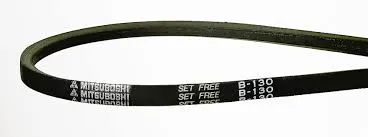- Arabic
- French
- Russian
- Spanish
- Portuguese
- Turkish
- Armenian
- English
- Albanian
- Amharic
- Azerbaijani
- Basque
- Belarusian
- Bengali
- Bosnian
- Bulgarian
- Catalan
- Cebuano
- Corsican
- Croatian
- Czech
- Danish
- Dutch
- Afrikaans
- Esperanto
- Estonian
- Finnish
- Frisian
- Galician
- Georgian
- German
- Greek
- Gujarati
- Haitian Creole
- hausa
- hawaiian
- Hebrew
- Hindi
- Miao
- Hungarian
- Icelandic
- igbo
- Indonesian
- irish
- Italian
- Japanese
- Javanese
- Kannada
- kazakh
- Khmer
- Rwandese
- Korean
- Kurdish
- Kyrgyz
- Lao
- Latin
- Latvian
- Lithuanian
- Luxembourgish
- Macedonian
- Malgashi
- Malay
- Malayalam
- Maltese
- Maori
- Marathi
- Mongolian
- Myanmar
- Nepali
- Norwegian
- Norwegian
- Occitan
- Pashto
- Persian
- Polish
- Punjabi
- Romanian
- Samoan
- Scottish Gaelic
- Serbian
- Sesotho
- Shona
- Sindhi
- Sinhala
- Slovak
- Slovenian
- Somali
- Sundanese
- Swahili
- Swedish
- Tagalog
- Tajik
- Tamil
- Tatar
- Telugu
- Thai
- Turkmen
- Ukrainian
- Urdu
- Uighur
- Uzbek
- Vietnamese
- Welsh
- Bantu
- Yiddish
- Yoruba
- Zulu
Dec . 30, 2024 17:30 Back to list
Understanding Power Transmission Belts for Efficient Machine Performance and Durability
Understanding Power Transmission Belts An Overview
Power transmission belts are essential components in mechanical systems, widely used across various industries for efficient energy transfer and motion. These belts facilitate the transmission of power between rotating shafts, ensuring that machines function effectively. Their design, materials, and applications are crucial factors that influence their performance. This article delves into the various types of power transmission belts, their applications, benefits, and the future of belt technology.
Types of Power Transmission Belts
1. Flat Belts Historically one of the oldest forms of power transmission, flat belts are flat and require pulley systems to function. They are typically made from leather, rubber, or synthetic materials. Flat belts are known for their flexibility, making them suitable for light to medium loads. They are often used in machinery such as conveyors and textile machines.
2. V-Belts V-belts are characterized by their trapezoidal cross-section, which allows them to fit securely into corresponding grooves on pulleys. This design increases the friction between the belt and the pulley, enhancing power transmission and reducing slippage. V-belts are versatile and widely used in automotive, industrial, and agricultural applications due to their ability to handle heavy loads and variable speeds.
3. Timing Belts Timing belts, often made from rubber and featuring teeth on the inner surface, are specifically designed for synchronous motion between components. They ensure that the rotation of gears remains synchronized, which is critical in applications such as engine timing systems in vehicles. Their precise control makes them invaluable in robotics and automation.
4. Chain Belts While not traditional belts, chain belts perform similar power transmission functions, particularly in heavy-duty applications. They comprise interconnected links and are used in scenarios where high torque and durability are required, such as in conveyor systems and heavy machinery.
5. Poly-V Belts Combining the advantages of flat and V-belts, Poly-V belts feature multiple grooves and provide higher power transmission efficiency in a compact form. They are ideal for small spaces and are commonly found in automotive engines and compact appliances.
Applications of Power Transmission Belts
Power transmission belts are ubiquitous in various industrial sectors, including
- Automotive Industry Used for engine components, drive systems, and accessory drives. Timing belts and V-belts are critical for the operation of engines, ensuring smooth rotational motion.
- Manufacturing and Production In assembly lines and conveyor systems, power transmission belts facilitate the movement of products and materials, optimizing production efficiency
.power transmission belts

- Agricultural Equipment Power transmission belts are found in tractors and harvesting machines, allowing for efficient crop processing and land management.
- HVAC Systems In heating, ventilation, and air conditioning systems, belts help drive fans and compressors, contributing to climate control in buildings.
Benefits of Power Transmission Belts
The use of power transmission belts offers several advantages
1. Efficiency Belts are designed to minimize energy loss during power transmission, making them a cost-effective solution for driving machinery.
2. Flexibility and Customization They can be tailored to fit a wide range of applications, sizes, and loads, providing versatility in design and use.
3. Reduced Maintenance Compared to mechanical couplings, belts typically require less maintenance and are easier to replace, lowering downtime in production processes.
4. Noise Reduction Power transmission belts operate more quietly than gears or chains, making them preferable in applications where noise reduction is essential.
Future Trends in Belt Technology
The continuous evolution of materials and technology is leading to advancements in power transmission belts. Innovations such as improved synthetic materials, enhanced durability, and smart technologies, like monitoring systems for wear and tear, are transforming the landscape. Additionally, the push towards sustainability is prompting manufacturers to develop eco-friendly belts that minimize environmental impact.
Conclusion
Power transmission belts play a crucial role in modern machinery and equipment, enabling efficient energy transfer across a myriad of applications. As technology advances, the future of power transmission belts promises even greater efficiency, customization, and sustainability, solidifying their importance in industrial and commercial settings. From automotive to manufacturing, the impact of these seemingly simple components is profound, driving productivity and innovation in countless ways.
-
Variable Belt Drive AI Optimized for Efficiency
NewsAug.05,2025
-
High-Quality Tensioner Belt Pulley - Durable & Efficient
NewsAug.03,2025
-
Premium Timing Belt Factory | AI-Optimized Solutions
NewsAug.02,2025
-
Heat Joining Drive Belt | High-Durability Fusion Solution
NewsJul.31,2025
-
Timing Belt Video Guide: Selection, Design & Quality Insights
NewsJul.30,2025
-
High-Performance Variable Speed V Belt Drive for Efficient Power Transmission
NewsJul.30,2025

